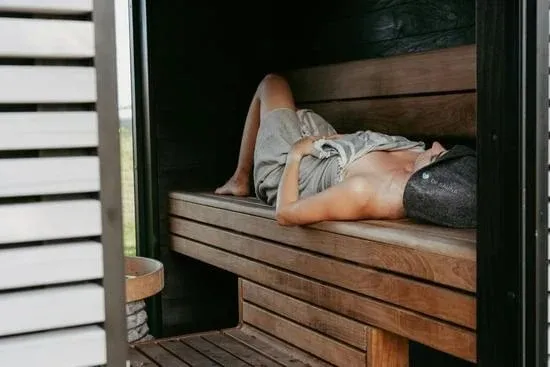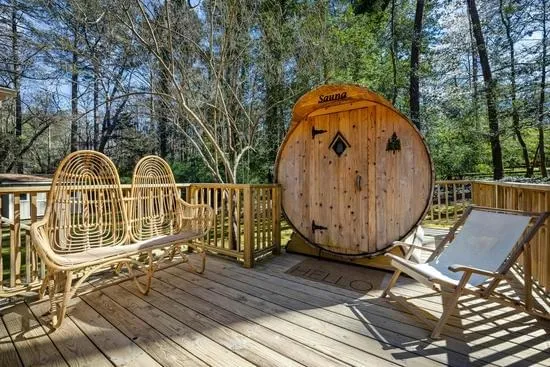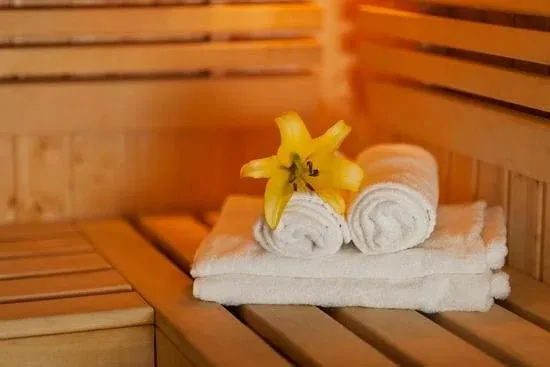Portable Indoor Sauna Benefits: Your Complete Guide

When I first encountered portable saunas years ago, I'll admit I was skeptical. How could a collapsible tent-like structure provide genuine sauna benefits? After testing dozens of models and hearing feedback from hundreds of users, I've completely changed my perspective. Portable saunas represent one of the most practical innovations in home wellness—delivering real results without the commitment, cost, or space requirements of traditional saunas.
In this comprehensive guide, I'll share everything you need to know about portable indoor saunas: their benefits, how they work, what to look for when buying, and whether they're right for your lifestyle. If you've been curious about sauna therapy but hesitant about the investment, this article is for you.
What Exactly is a Portable Sauna?
A portable sauna is a compact, lightweight wellness device designed to provide infrared or steam heat therapy without permanent installation. Unlike traditional cabinet saunas that require dedicated space and electrical work, portable units set up in minutes and store easily when not in use.
How Portable Saunas Work
Most modern portable saunas use infrared technology similar to full-sized models. Learn more about infrared heating in our complete infrared sauna guide.
The typical system includes a fabric enclosure (often made from waterproof, heat-reflective material), infrared heating panels or carbon fiber pads positioned around the interior, a collapsible frame or support structure, a chair or sitting platform included with the unit, and a simple control unit to adjust temperature and time settings.
Most portable saunas keep your head outside the heated area, which many users actually prefer. This design prevents the claustrophobic feeling some people experience in enclosed saunas while allowing you to read, watch TV, or simply breathe cool air during your session.
Types of Portable Saunas
Infrared Sauna Tents: The most common and affordable option ($200-$500). These feature a tent-like fabric structure with internal infrared panels. They fold completely flat for storage, typically weigh 15-25 pounds, and set up in 2-5 minutes. They're perfect for apartment dwellers, first-time sauna users, and budget-conscious wellness enthusiasts.
Portable Infrared Cabins: Mid-range units ($400-$800) with more structured designs. These have semi-rigid panels for better heat retention, more powerful heating elements for faster warm-up, improved insulation and durability, and sometimes include additional features like foot heating pads. They're ideal for regular users wanting better performance.
Steam Portable Saunas: Less common but available, these use steam generators rather than infrared heat. They typically cost $150-$400, provide traditional sauna experience with humidity, and require water filling and more maintenance. Note: steam units tend to be messier and require more careful storage to prevent mold.

The Benefits of Portable Saunas
Portable saunas deliver impressive advantages that go beyond just convenience.
Health and Wellness Benefits
The therapeutic benefits match those of permanent saunas because the infrared technology is essentially identical. Regular sessions provide:
Detoxification: Infrared heat penetrates skin deeply, promoting intense sweating that helps eliminate toxins, heavy metals, and metabolic waste. Studies show sauna users can sweat out up to 15-20% toxins compared to 3-5% in regular exercise sweat.
Improved Circulation: Heat exposure increases heart rate and dilates blood vessels, similar to moderate cardiovascular exercise. Research published in the Journal of the American College of Cardiology shows regular sauna use reduces the risk of cardiovascular disease by up to 50%.
Pain and Inflammation Relief: Infrared heat reaches deep into muscles, joints, and tissues, providing relief from chronic pain conditions including arthritis, fibromyalgia, muscle soreness, and joint stiffness. The heat increases blood flow to damaged tissues, accelerating healing.
Stress Reduction and Better Sleep: Heat therapy triggers the release of endorphins (natural feel-good chemicals), reduces cortisol (stress hormone) levels, and promotes deep relaxation. Many users report falling asleep faster and sleeping more deeply after evening sauna sessions.
Skin Health Improvements: Increased circulation delivers more oxygen and nutrients to skin cells, while sweating clears pores of impurities. Regular users notice improved skin tone and texture, reduced appearance of cellulite, faster wound healing, and a healthy glow.
Weight Management Support: While not a substitute for exercise, sauna use burns calories through increased heart rate and metabolic activity. A typical 30-minute session can burn 300-600 calories, similar to a moderate walk. The key word is "support"—saunas complement healthy diet and exercise but aren't magic weight loss tools.
Practical Benefits
Beyond health advantages, portable saunas offer lifestyle benefits that make them uniquely appealing.
Affordability: At $200-$800, portable saunas cost 70-90% less than permanent installations. Compare this to traditional saunas at $2,000-$8,000+ and the value proposition becomes clear. Even accounting for slightly shorter lifespans (5-10 years vs 15-20 years for cabinets), the cost per use remains remarkably low.
Zero Installation Required: No electrician needed, no bathroom renovation, no landlord approval (for renters), and no permanent modifications to your home. Unbox, unfold, plug in any standard 120V outlet, and you're ready to go. This simplicity cannot be overstated—it removes every barrier that prevents people from starting sauna therapy.
Perfect for Renters: Moving to a new apartment? Pack up your sauna in its carrying bag and take it with you. No lost investment, no negotiating with landlords, and continuous access to your wellness routine regardless of where life takes you.
Minimal Space Requirements: Most portable saunas need just 3x3 feet of floor space during use. When stored, they typically collapse to the size of a large suitcase or fit easily in a closet. For apartment dwellers or those with limited space, this is often the only viable sauna option. Check out our small space solutions guide for more space-saving ideas.
Low Operating Costs: Portable units typically draw 800-1500 watts, costing just $5-15 monthly for regular use (3-4 sessions weekly). The efficient heating and shorter session times keep electricity consumption minimal.
Quick Setup and Use: From storage to sweating in 5-10 minutes total. Compare this to traditional saunas requiring 30-45 minute pre-heat times. The convenience factor dramatically increases actual usage—the easier something is to do, the more likely you'll maintain the habit.
Potential Drawbacks to Consider
Honesty is crucial when making wellness investments. Portable saunas aren't perfect for everyone.
Limitations Compared to Cabinet Saunas
Aesthetic Experience: Let's be frank—a fabric tent doesn't match the visual appeal of a beautiful wooden cabinet. If aesthetics matter greatly to you, this might be a compromise. However, most users quickly forget about appearance once they're enjoying the benefits.
Heat Distribution: While effective, heat distribution can be less even than in cabinet saunas with panels on all sides. You might notice temperature variations between upper and lower body, or certain areas feeling warmer than others. Adjusting your position usually solves this.
Durability Concerns: Fabric and lightweight construction means portable saunas typically last 5-10 years with good care, compared to 15-20+ years for quality cabinets. Zippers, fabric, and heating element connections represent potential failure points. The good news: at $200-$800, replacement costs remain reasonable.
Head Outside Design: Most portable saunas keep your head outside the heated enclosure. While many prefer this, traditionalists wanting full-body heat immersion might find it unsatisfying. Some higher-end portable models offer optional neck closures to capture more heat around your face and head.
Setup and Takedown: While quick (2-5 minutes), you still need to set up and take down the unit for each use if you don't leave it standing. This isn't a major issue, but permanent saunas offer the ultimate in convenience—just open the door and turn it on.
Not Ideal For...
Portable saunas might not be the best choice if you strongly prefer traditional high-heat Finnish-style experiences (170-195°F), need to accommodate multiple people simultaneously (see our two-person sauna guide), want a permanent home spa feature that adds property value, or have mobility issues that make setting up/taking down difficult.
What to Look For When Buying
Not all portable saunas are created equal. Here's how to identify quality units.
Key Features
Heating Technology: Look for carbon fiber heating panels (most efficient, longest-lasting) with full-spectrum infrared (near, mid, and far infrared). Wattage between 1000-1500W provides adequate heat while using standard outlets. Some cheaper models use steam or hot air—avoid these for serious wellness use.
Material Quality: The fabric should be waterproof (prevents sweat damage), heat-reflective (improves efficiency), and durable with reinforced seams. Better models use multiple layers with insulation between them. Check user reviews for fabric durability issues.
Control Features: Digital controllers are easier to use than analog. Look for precise temperature control (ideally 1-degree increments from 80-150°F), timer functions up to 60 minutes with auto-shutoff, and remote controls that let you adjust settings without opening the unit.
Safety Certifications: This is non-negotiable. Verify the unit has UL, ETL, or CE certification, EMF (electromagnetic field) emissions under 3 milligauss, overheat protection that automatically shuts down if temperature exceeds safe limits, and stable construction that won't tip or collapse.
Included Accessories: Quality packages should include a chair or folding stool appropriate for the sauna height, carrying bag for storage and transport, hand towel and/or sweat towel, and sometimes foot heating pads for additional comfort.
Warranty Coverage: Look for at least 1 year on parts and labor. Premium brands offer 2-3 year warranties. Be cautious of products with no warranty or very limited coverage—it usually indicates low quality.
Size Considerations
Portable saunas come in various sizes. Match the size to your body type and space. Standard units accommodate users up to 6'2" and 250 pounds comfortably. Larger models available for taller or heavier users (check weight and height limits). Measure your available space before purchasing—you need clearance to sit comfortably.
| Your Height | Recommended Sauna Height | Comfort Notes |
|---|---|---|
| Under 5'6" | 5'6" - 6'0" | All standard models work well |
| 5'6" - 6'0" | 6'0" - 6'6" | Standard to tall models |
| Over 6'0" | 6'6" - 7'0" | Seek tall-specific models |
How to Use Your Portable Sauna
Maximize benefits and safety with proper usage techniques.
Setup Process
Choose a location with access to a standard electrical outlet, adequate ventilation (near a window or in a well-aired room), and a flat, stable surface (avoid carpet if possible—tile or vinyl is ideal). Unfold the sauna frame and fabric enclosure. Position the chair inside at a comfortable height. Connect the power cord and control unit. Pre-heat for 10-15 minutes before entering.
Session Guidelines
First-Time Users: Start with 15 minutes at lower temperature (110-120°F). Gradually increase duration and temperature as you adapt. Listen to your body—dizziness or extreme discomfort means exit immediately.
Regular Users: Most people settle into 20-30 minute sessions at 125-140°F. Frequency of 3-5 times weekly provides optimal benefits. Some advanced users do daily 30-40 minute sessions, but this isn't necessary for results.
Hydration is Critical: Drink 16-20 ounces of water before your session, keep water accessible during use (bottle with straw works well), and drink another 16-20 ounces after to replace lost fluids. Dehydration is the most common cause of post-sauna discomfort.
What to Wear (or Not Wear)
Most users prefer minimal clothing for maximum skin exposure to infrared heat. Options include swimsuit or underwear, light cotton shorts/sports bra, or nothing (in the privacy of your home). Whatever you choose, use a towel to sit on—it absorbs sweat and protects the chair.
During Your Session
Make the most of your time by bringing a book or tablet (many users read during sessions), listening to music or podcasts, meditating or practicing breathing exercises, or simply relaxing and letting your mind wander. Your head is outside the heat, so you can comfortably engage in these activities.
After Your Session
Cool down gradually—don't immediately jump into a cold shower. Shower to rinse off sweat (lukewarm water initially). Continue hydrating. Leave the sauna unzipped and open to air dry. Wipe down the interior and chair with a dry towel. Store when completely dry to prevent mildew.
Maintenance and Care
Proper care extends your sauna's lifespan significantly.
After Each Use
Air dry the interior completely before storing (15-30 minutes). Wipe visible moisture with a dry towel. Check that all zippers are fully closed during storage. Unplug and coil the power cord neatly.
Weekly
Clean the interior fabric with a damp cloth (mild soap if needed). Vacuum any dust or debris from corners. Wipe down the chair or bench. Inspect heating elements visually (look for damage, but don't touch).
Monthly
Deep clean all fabric surfaces. Check zippers for smooth operation (lubricate with zipper wax if sticky). Inspect frame components for stability. Test all control functions. Clean the exterior fabric.
Storage Tips
If storing for extended periods (more than a week between uses), ensure the sauna is completely dry, use the included storage bag, and store in a climate-controlled area (not garage or shed where humidity fluctuates). Avoid folding when wet—this is the primary cause of mildew and odor issues.
Cost-Benefit Analysis
Let's look at the real numbers to understand the value proposition.
Upfront Investment
| Item | Cost | Notes |
|---|---|---|
| Basic Portable Sauna | $200-$400 | Entry-level functionality |
| Premium Portable Sauna | $400-$800 | Better quality and features |
| Additional Towels | $20-$40 | 2-3 dedicated sauna towels |
| Optional Accessories | $30-$100 | Thermometer, timer, etc. |
Total initial investment: $250-$900 depending on unit and accessories.
Ongoing Costs
Electricity: $5-15 per month for regular use (based on 1200W unit, 3-4 sessions weekly, 30 minutes each). Replacement/maintenance: Minimal; occasional zipper repairs or fabric patches.
Value Comparison
Compare portable sauna ownership to alternatives:
- Sauna spa visits: $25-60 per session × 12 sessions monthly = $300-$720/month
- Gym with sauna: $50-150/month membership
- Permanent home sauna: $2,000-$8,000 upfront + $15-40/month operating
- Portable sauna: $400 upfront + $10/month operating
If you use your portable sauna twice weekly, it pays for itself versus spa visits in less than 2 months. Versus gym memberships in 3-6 months. The value becomes undeniable for anyone committed to regular use.
Real User Experiences
Over the years, I've collected countless stories from portable sauna users. Here are common themes:
Success Stories
A 32-year-old apartment dweller reported that her $350 portable sauna helped her manage chronic back pain better than physical therapy alone, with the convenience of daily 20-minute sessions fitting her busy schedule. A 45-year-old with fibromyalgia found that regular portable sauna sessions reduced pain flares by 60-70%, allowing her to reduce pain medication. A couple in their 50s uses their portable sauna 4-5 times weekly for stress relief and improved sleep quality, reporting it was the best health investment they've made.
Common Adjustments
Most users report these learning curves: first few sessions feel uncomfortable while body adapts, typically need to experiment with temperature settings to find sweet spot, may initially set up/take down for each use, but many eventually leave it assembled in a dedicated spot, and it takes 2-3 weeks to establish a consistent routine.
Realistic Expectations
What users consistently report: noticeable improvements in sleep quality within 1-2 weeks, stress reduction immediately after sessions, pain relief varies (some immediate, some gradual), skin improvements visible after 4-6 weeks of regular use, and cardiovascular benefits accumulate over months of consistent use.
What they don't experience: instant weight loss without diet/exercise changes, elimination of chronic conditions (management, not cures), and perfect solution if they don't use it consistently.
Portable vs. Permanent: Making Your Decision
How do you choose between portable and permanent solutions?
Choose Portable If You:
- Rent your home or move frequently
- Have a limited budget ($200-$800 vs $2,000+)
- Have minimal space or need flexible storage
- Want to try sauna therapy before major investment
- Prefer convenience of quick setup
- Don't need to accommodate multiple people simultaneously
- Are comfortable with the "head out" design
Choose Permanent If You:
- Own your home and plan to stay long-term
- Have dedicated space available
- Budget allows $2,000-$8,000+ investment
- Want premium aesthetics and experience
- Need capacity for 2+ people (see our two-person guide)
- Prefer the ultimate in convenience (just open door and turn on)
- Value longevity (15-20+ years vs 5-10 years)
Consider Both If:
Some of my clients start with a portable unit to establish the sauna habit, then upgrade to a permanent unit after 6-12 months once they're certain they'll use it regularly. The portable then becomes a travel companion or guest option. This "try before you commit big" approach makes excellent sense for many people.
Top Mistakes to Avoid
Learn from common pitfalls:
Buying the Cheapest Unit: Very cheap saunas (under $150) often have poor heating, inadequate safety features, and fail quickly. Invest at least $250-300 for decent quality.
Ignoring Size Requirements: A sauna that's too small makes sessions uncomfortable and unsustainable. Better to have slightly too much space than too little.
Skipping Pre-Heating: Entering a cold sauna wastes session time and prevents optimal benefits. Always pre-heat 10-15 minutes.
Inadequate Hydration: Dehydration causes most negative experiences. Drink before, during (if possible), and after every session.
Not Air-Drying Before Storage: Storing a damp sauna leads to mildew, odors, and fabric degradation. Always dry completely.
Setting Unrealistic Expectations: Portable saunas deliver real benefits but aren't magic. Consistent use over weeks and months produces results, not overnight transformations.
Final Thoughts
Portable indoor saunas represent a democratization of wellness technology. For less than the cost of three months of gym membership, you can own a device that delivers genuine therapeutic benefits, fits in a closet, and adapts to your lifestyle rather than demanding you adapt to it.
Are they perfect? No. The fabric construction won't impress anyone aesthetically, and they don't match the luxurious experience of a $5,000 cedar cabinet. But perfection isn't the goal—accessible, effective wellness is. On that measure, portable saunas succeed brilliantly.
I've watched portable saunas help people manage chronic pain, improve cardiovascular health, reduce stress, and establish sustainable wellness routines. The key is matching the right tool to your actual needs and circumstances, not an idealized version of your life.
If you're curious about sauna therapy but hesitant about the commitment, start with a quality portable unit. Use it consistently for 2-3 months. If you love it and want to upgrade to a permanent installation later, great—your portable unit will have paid for itself in spa visit savings. If it turns out sauna therapy isn't for you, you've invested hundreds rather than thousands.
For most people reading this article, a portable sauna represents the perfect entry point into wellness technology that can genuinely improve quality of life. The benefits are real, the barriers are minimal, and the only real risk is not trying at all.
Ready to explore your options? Contact us for personalized recommendations based on your specific needs, space, and budget. Let's find the perfect portable sauna solution for your wellness journey. For more guidance on selecting the right sauna, check out our comprehensive buying guide.
Ready to Start Your Sauna Journey?
Discover which portable sauna is perfect for your lifestyle. Get expert recommendations tailored to your needs.
Frequently Asked Questions
Yes! Portable infrared saunas effectively deliver the same health benefits as permanent units including detoxification, improved circulation, pain relief, and stress reduction. They reach therapeutic temperatures of 120-140°F and use the same infrared technology.
Portable saunas range from $200-$800 depending on quality and features. Basic tent models start around $200-$400, while premium portable cabins cost $400-$800.
Yes, portable saunas can be used daily. Start with 15-20 minute sessions 3-4 times weekly, then increase frequency as your body adapts. Always stay hydrated and listen to your body.
References
- Journal of the American College of Cardiology. "Cardiovascular and Other Health Benefits of Sauna Bathing"
- Mayo Clinic. "Infrared Sauna: What Are the Benefits?"
- Harvard Health Publishing. "Sauna Use and Health Benefits"




